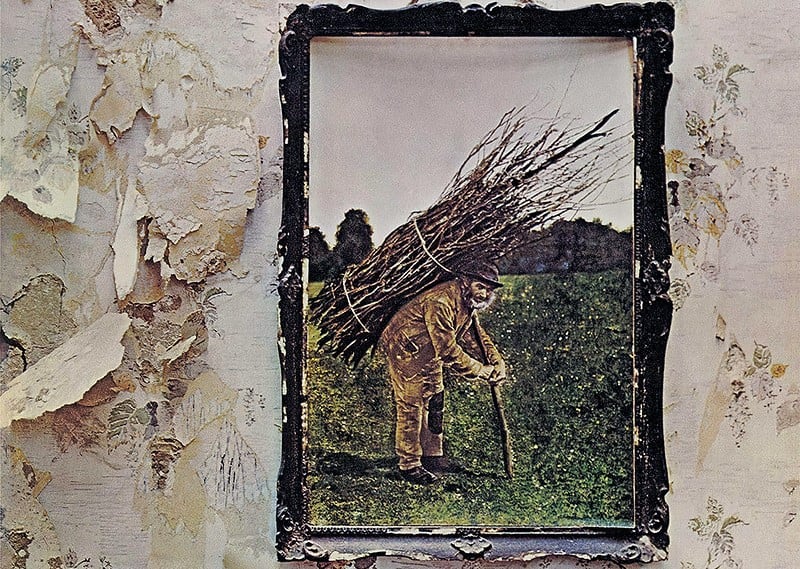
After over fifty years, the stick man on the famous Led Zeppelin IV album cover has recently been identified.
The Wiltshire Museum in southwestern England disclosed that the man, known as the “Stick Man,” was a thatcher from the late Victorian era.
This finally solves the mystery surrounding the identity of the person featured on the cover of the 1971 album by the English rock band Led Zeppelin.
A Wiltshire Thatcher
The man believed to be the thatcher is identified as Lot Long, also known as Longyear. Born in Mere, Wiltshire in 1823, he was a widower residing in a modest cottage when the photo was captured. As per the museum, Lot Long passed away in 1893.
Brian Edwards, a visiting research fellow at the University of the West of England (UWE Bristol), stumbled upon this discovery. He found the original black and white photograph with “A Wiltshire Thatcher” handwritten on it, leading to the confirmation of Lot Long as the figure on the iconic album cover.
Genuineness of the photograph
The photograph is believed to be genuine because it has a thumbprint in the corner, as revealed by Edwards on BBC Radio Wiltshire. This significant discovery occurred within a Victorian photo album named Reminiscences of a visit to Shaftesbury. Whitsuntide 1892. A present to Auntie from Ernest.
The album contained over a hundred views of buildings and streets, along with a few portraits of rural workers, according to the museum.
Expressing his enthusiasm, Edwards, in a released statement, revealed, “Led Zeppelin created the soundtrack that has accompanied me since my teenage years, so I really hope the discovery of this Victorian photograph pleases and entertains (surviving band members) Robert, Jimmy, and John Paul.”
Photo taken by influential Victorian photographer
The writing in the album matches a part of a signature found online, suggesting that the photo was taken by the influential Victorian photographer Ernest Howard Farmer, as shared by Edwards.
Led Zeppelin IV: The Identity of the Mysterious ‘Stick Man’ on the Album’s Cover has been finally been revealed. Lot Long, a Wiltshire thatcher in an 1892 photograph by Ernest Howard Farmer #LedZeppelin pic.twitter.com/96o2gY4HIR
— muerdekeroyo (@muerdekeroyo) November 10, 2023
As per the university, the colored version of the photograph was discovered by the band’s lead singer, Robert Plant, in an antique store near guitarist Jimmy Page’s house in Berkshire of southern England.
This colored version was the sole feature on the cover of the Led Zeppelin IV album, which was quite unusual as it didn’t have any words on it—not even the band’s name. Since its release in 1971, the album has sold over thirty-seven million copies worldwide.
Fascination on the widespread recognition of the photograph
Consequently, the image of the elderly man with a weathered face and gray beard gripping a long stick for support while carrying hazel twigs on his back, gained widespread recognition.
The museum’s director, David Dawson, expressed his fascination, stating, “It is fascinating to see how this theme of rural and urban contrasts was developed by Led Zeppelin and became the focus for this iconic album cover 70 years later.”
The original photograph and others from the Victorian era taken in the west of England will be displayed at the Wiltshire Museum next spring.



